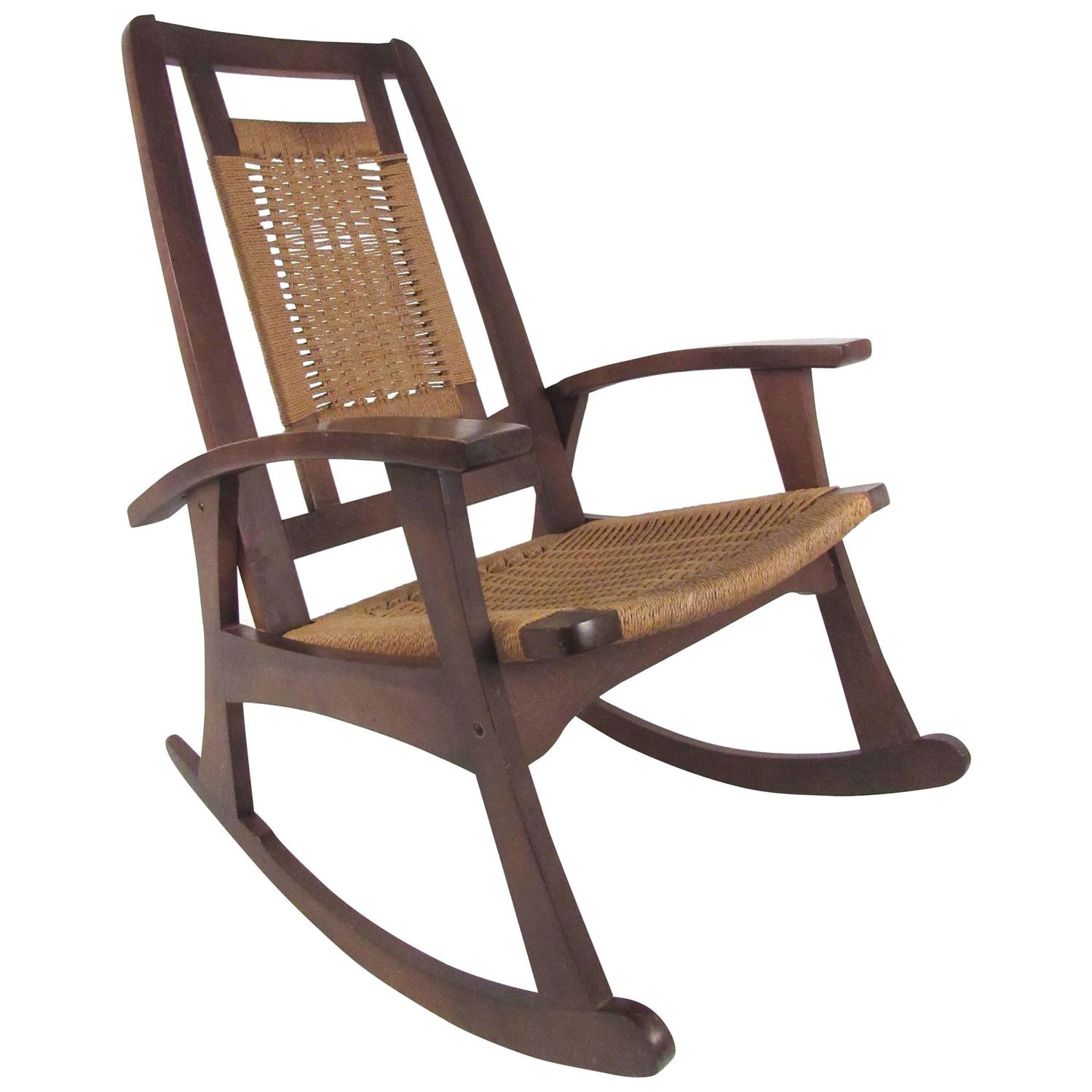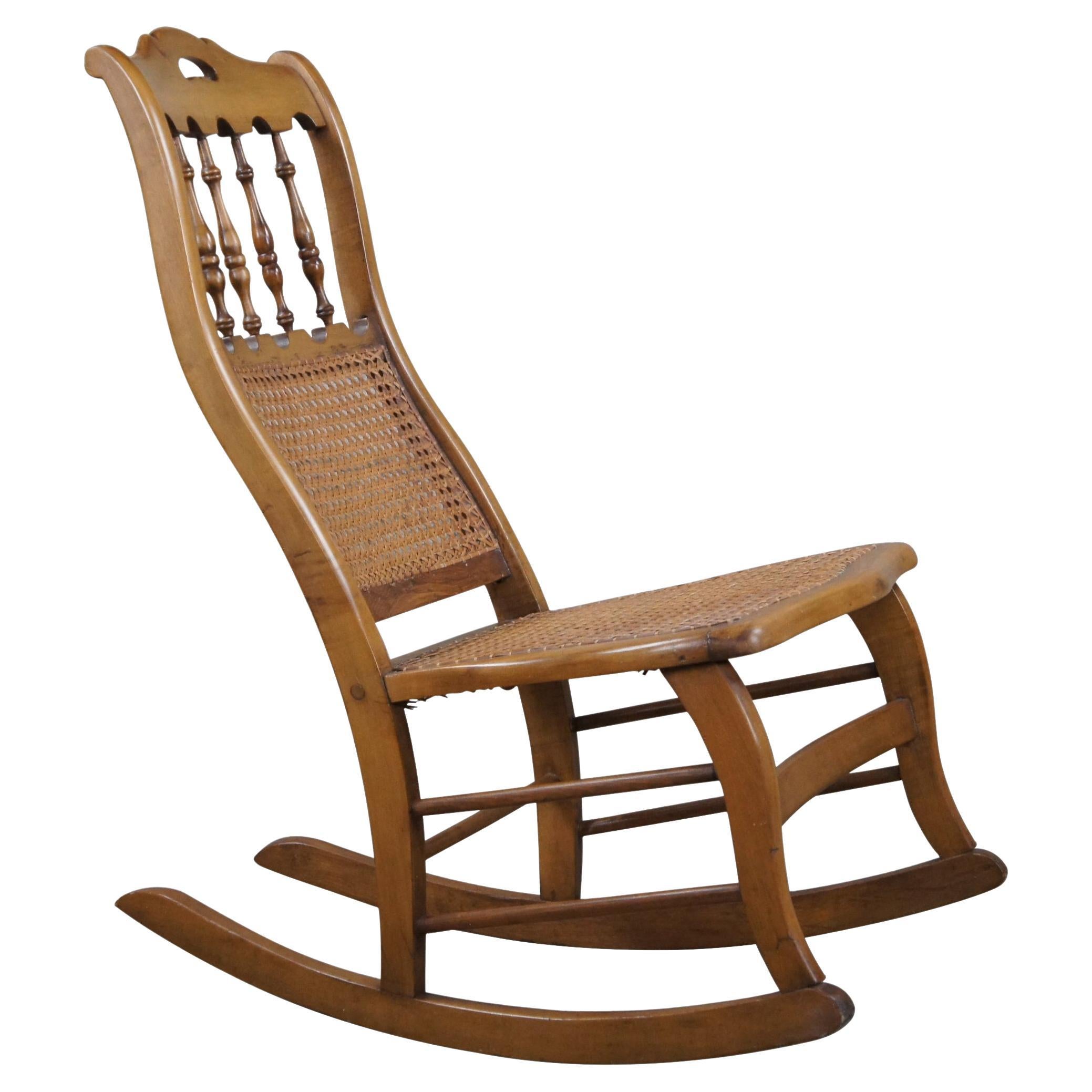Understanding Rush Seat Rocking Chair Construction

The artistry of a rush seat rocking chair lies not just in its gentle rocking motion, but in the intricate weaving of its seat and the harmonious blend of materials that create a piece both durable and beautiful. Understanding the construction reveals the dedication and skill involved in crafting these timeless pieces.
Materials Used in Rush Seat Rocking Chair Construction
The materials chosen significantly influence the chair’s longevity and aesthetic appeal. Wood forms the sturdy foundation, with hardwoods like oak, cherry, or maple preferred for their strength and resistance to wear. These woods offer a range of colors and grain patterns, contributing to the chair’s unique character. The rush itself, whether natural or synthetic, determines the seat’s texture, comfort, and lifespan. Metal components, such as screws and brackets, ensure the structural integrity of the rocking mechanism. Finally, finishes, such as varnish or lacquer, protect the wood and enhance its natural beauty. Hardwoods offer superior durability compared to softer woods, while natural rush, though more delicate, provides a uniquely textured and aesthetically pleasing seat.
Rush Seat Weaving Process
Weaving the rush seat is a meticulous process demanding patience and precision. The following table Artikels the steps involved:
| Step | Description | Tools | Technique |
|---|---|---|---|
| 1. Preparation | Soak rush to make it pliable. Prepare the chair frame by securing the seat supports. | Water basin, measuring tape, pliers | Ensure even soaking to prevent breakage. Secure supports firmly to the frame. |
| 2. Starting the Weave | Begin by weaving the first few rows of rush around the seat supports, creating a firm base. | Weaving needle, awl | Use a strong, consistent tension to ensure a tight and even weave. |
| 3. Weaving Pattern | Continue weaving, following a chosen pattern (e.g., open or closed weave). | Weaving needle | Maintain consistent tension and spacing between the rush strands. |
| 4. Finishing | Secure the ends of the rush, trimming any excess. Apply a sealant if desired. | Scissors, sealant (optional) | Ensure a clean and professional finish. Sealant will protect the rush from moisture. |
Comparison of Rush Materials
Natural rush, derived from the Juncus effusus plant, offers a unique texture and subtle variations in color, contributing to a rustic charm. However, it is susceptible to damage from moisture and wear, requiring more care and potentially shorter lifespan. Synthetic rush, often made from polypropylene, provides increased durability and resistance to moisture and wear, making it a more practical choice for high-traffic areas. However, it may lack the natural beauty and tactile appeal of natural rush. The choice depends on the desired balance between aesthetics and practicality.
Structural Components and Rocking Mechanism
The rocking chair’s structure is a sophisticated interplay between the seat and the rockers. The seat, firmly attached to the chair’s frame, must withstand the weight and movement. The rockers, typically curved pieces of wood attached to the chair’s legs, create the rocking motion. The smooth interaction between the seat and rockers is crucial for comfortable and safe rocking.
The Seat: The woven rush seat is the focal point, providing comfort and visual interest. Its attachment to the frame is critical for stability.
The Rockers: Curved pieces of wood, carefully shaped to provide a smooth and balanced rocking motion. Their attachment to the legs and their curvature determine the rocking experience.
The Frame: The supporting structure that holds the seat and rockers together. The strength and stability of the frame are paramount to the chair’s overall durability.
Historical and Cultural Significance of Rush Seat Rocking Chairs

Ah, the rush seat rocking chair. A simple object, yet imbued with a history as rich and textured as the rush itself. Its gentle sway has witnessed centuries of human experience, a silent companion to countless joys and sorrows. Let us delve into its captivating past, exploring its evolution and the profound cultural impact it has woven into the fabric of our lives.
The story of the rush seat rocking chair is intricately woven with the narratives of craftsmanship, social change, and evolving aesthetics. Its journey spans continents and centuries, reflecting the ingenuity and artistry of countless hands.
A Chronological Journey of the Rush Seat Rocking Chair
Tracing the precise origins of the rocking chair is difficult, but we can follow its evolution through key periods and stylistic shifts. The combination of a rocking base and rush seat emerged as a synthesis of existing furniture forms, reflecting the practical needs and evolving aesthetics of different eras.
- 17th-18th Centuries: Early Forms and Regional Variations: While the exact origins remain elusive, early forms of rocking chairs, possibly without rush seats, emerged in Europe during this period. These were often sturdy, functional pieces, reflecting the simpler aesthetics of the time. Regional variations existed, influenced by available materials and local craftsmanship traditions.
- 18th-19th Centuries: The Rise of Popularity in America: Rocking chairs gained significant popularity in the American colonies and later the United States. The rush seat, a readily available and inexpensive material, became a common feature, making these chairs accessible to a wider range of people. Styles began to diversify, reflecting the burgeoning tastes of different social classes.
- Late 19th and Early 20th Centuries: Mass Production and Industrialization: The advent of industrialization led to mass production techniques, making rocking chairs, including those with rush seats, more affordable and widely available. This period saw stylistic innovations, including the incorporation of more elaborate designs and decorative elements.
- Mid-20th Century to Present: Revival and Appreciation: Following a period of decline in popularity, rush seat rocking chairs have experienced a revival in recent decades. There’s a renewed appreciation for handcrafted furniture and the rustic charm of these iconic pieces. Contemporary designs often incorporate traditional elements while incorporating modern sensibilities.
Cultural Significance of Rocking Chairs Across Societies
The rocking chair’s cultural significance extends beyond its practical function. It has become a potent symbol, reflecting diverse values and social practices across various societies and time periods.
In American culture, the rocking chair has been closely associated with relaxation, contemplation, and the leisurely pace of life, often depicted on porches, symbolizing comfort and a sense of home. Its presence in countless photographs and paintings reinforces its status as an enduring symbol of Americana. In contrast, in some other cultures, rocking chairs may hold different symbolic meanings or may not even be as widely prevalent.
Comparative Design Features Across Regions and Cultures
While the fundamental structure of a rocking chair remains relatively consistent, subtle design variations exist across different regions and cultures. These differences often reflect the availability of materials, local craftsmanship traditions, and prevailing aesthetic preferences.
For instance, American rocking chairs often feature a more pronounced curve in the rockers, while those from certain European countries might have a more subdued design. The style of the rush seat weaving itself can also vary, reflecting regional techniques and decorative styles. The choice of wood, too, often reflects local resources and preferences.
Depictions of Rush Seat Rocking Chairs in Art, Literature, and Popular Culture
The enduring appeal of the rush seat rocking chair is evident in its frequent appearances in various forms of artistic expression. These depictions not only showcase the chair’s aesthetic qualities but also illuminate its deeper cultural significance.
Consider, for example, the numerous paintings depicting elderly figures seated on rocking chairs on front porches, evoking a sense of tranquility and reflection. These images often form part of a larger narrative about family, home, and the passage of time. In literature, the rocking chair frequently serves as a symbol of comfort, age, and the cyclical nature of life. Its presence in popular culture, from films to television shows, further underscores its enduring relevance and iconic status.
